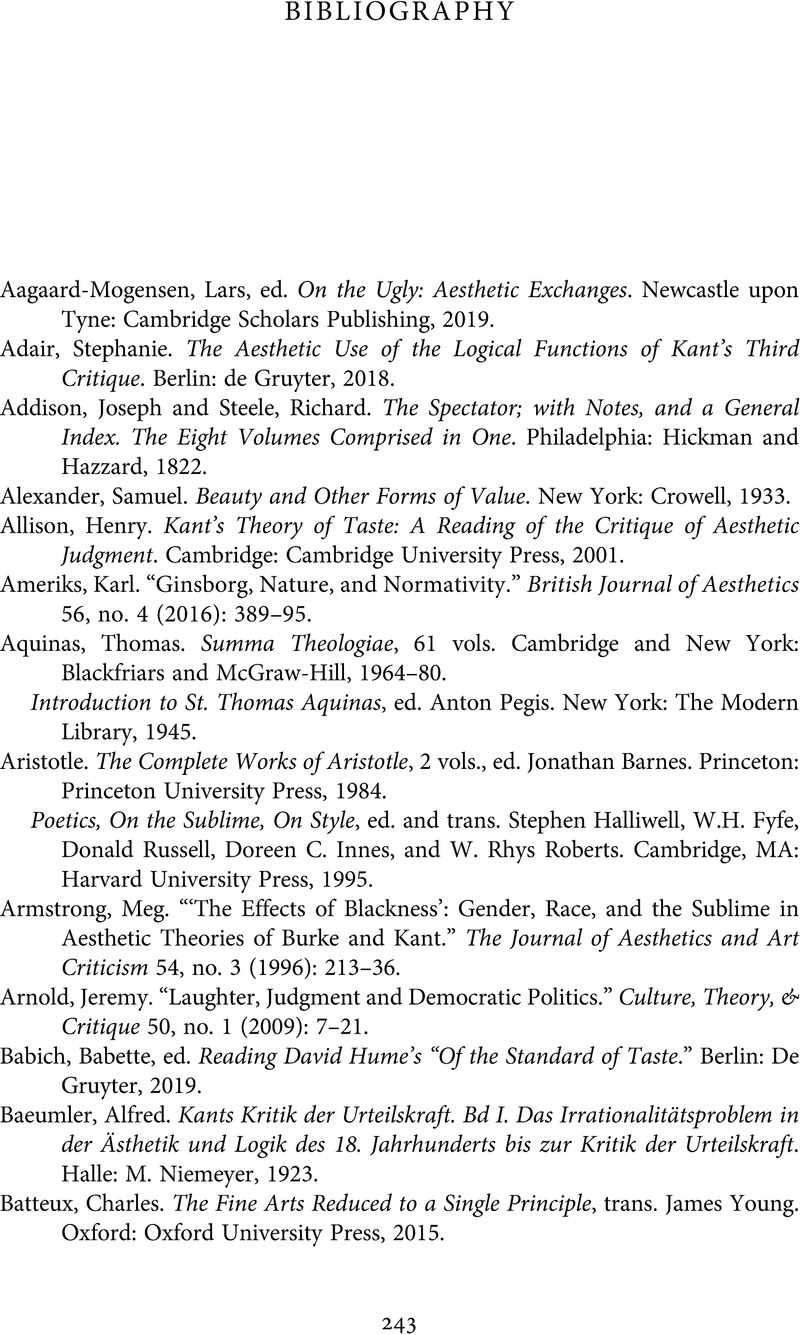Book contents
- The Origins of Kant’s Aesthetics
- The Origins of Kant’s Aesthetics
- Copyright page
- Dedication
- Contents
- Figures
- Acknowledgments
- A Note on Citations
- Abbreviations
- Introduction
- Part I Aesthetic Judgment and Beauty
- Part II Genius and the Fine Arts
- Part III Negative and Positive States
- Closing Reflections
- Bibliography
- Index
- References
Bibliography
Published online by Cambridge University Press: 10 January 2024
- The Origins of Kant’s Aesthetics
- The Origins of Kant’s Aesthetics
- Copyright page
- Dedication
- Contents
- Figures
- Acknowledgments
- A Note on Citations
- Abbreviations
- Introduction
- Part I Aesthetic Judgment and Beauty
- Part II Genius and the Fine Arts
- Part III Negative and Positive States
- Closing Reflections
- Bibliography
- Index
- References
Summary

- Type
- Chapter
- Information
- The Origins of Kant's Aesthetics , pp. 243 - 257Publisher: Cambridge University PressPrint publication year: 2023

